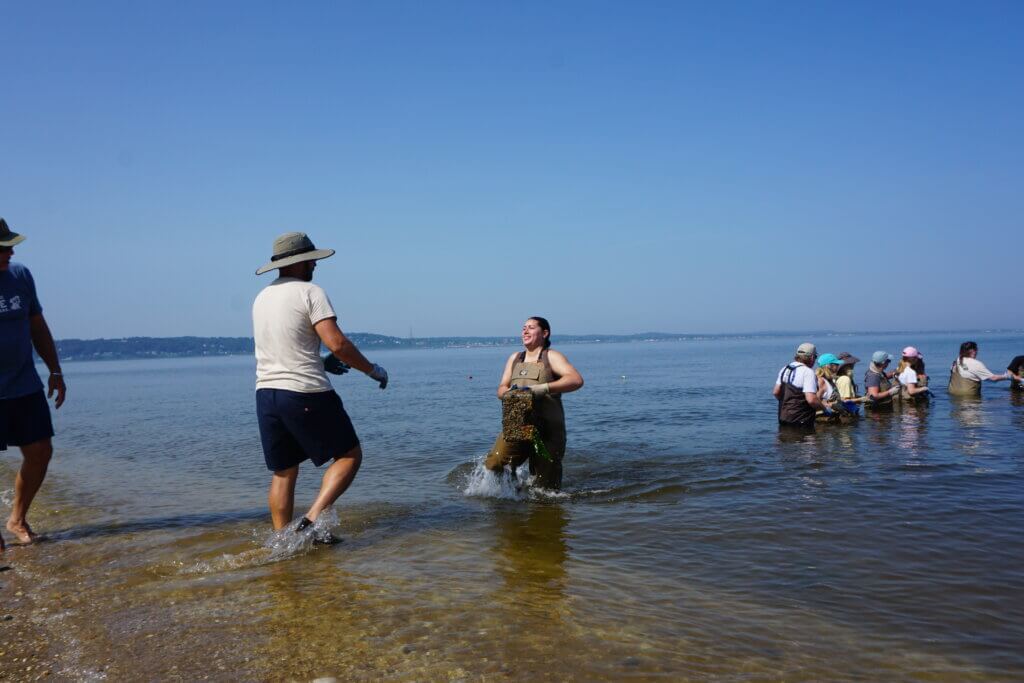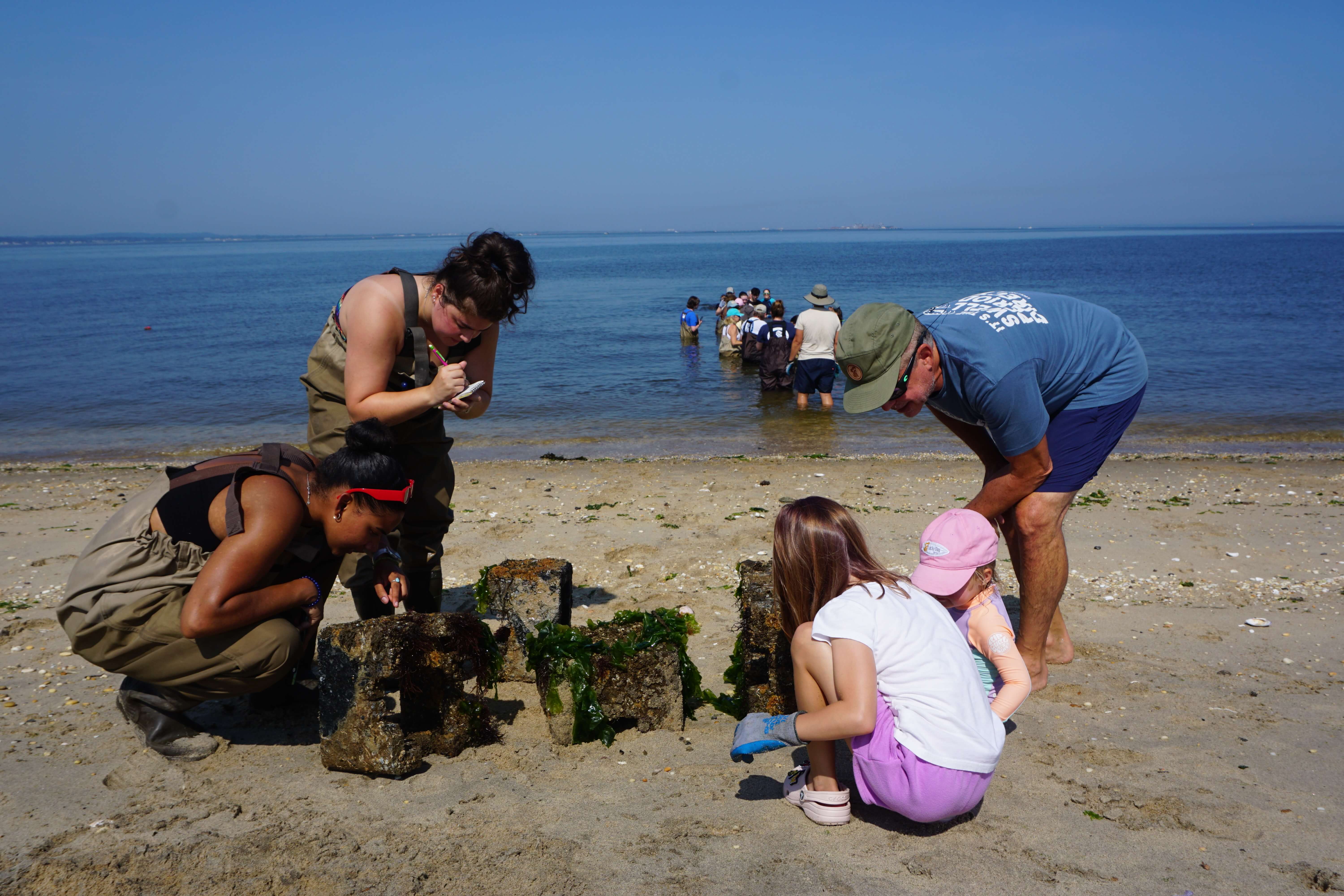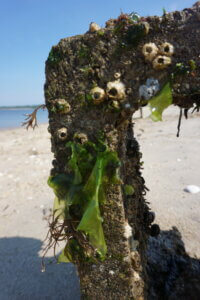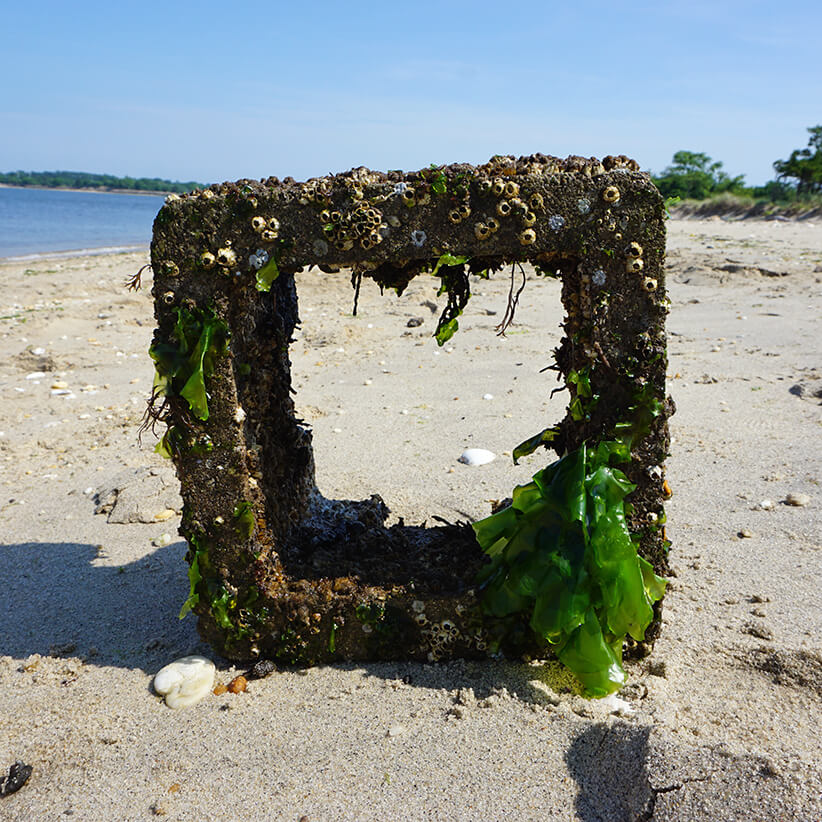
When oysters are in the market for a home, do they prefer new construction or resales? An experimental research project at Sandy Hook aims to find out.
On July 16, a team of community volunteers, students and scientists from the Monmouth University Urban Coast Institute (UCI), New Jersey City University (NJCU), the National Oceanic and Atmospheric Administration (NOAA), and the New Jersey Sea Grant Consortium recovered a formation of concrete blocks called oyster castles that had been submerged along a secluded beach on Sandy Hook Bay for a year. The project is being led by NJCU Associate Professor Allison Fitzgerald with co-principal investigator and UCI Coastal Resilience and Restoration Practitioner Meredith Comi.

The group formed a line to the installation and passed each block down to the shore, where the growth on them was inspected and catalogued. Each piece was covered with organisms like mussels, barnacles, sponges, tube worms, and algae.
The blocks were transported to the nearby NOAA James J. Howard Marine Sciences Laboratory at Sandy Hook and placed in tanks, where oyster larvae will be introduced to the waters and monitored for several weeks. Alongside clean, bare castles, researchers will study whether or not all those other animals (‘fouling organisms’) are detrimental to oyster larvae looking to recruit back to the reef.
The project was initiated because researchers have observed that as reef structures have been deployed in the wild, oysters will colonize initially, but less and less each year thereafter. The team hopes to determine whether and why oysters lose interest or have trouble attaching to the blocks once they’ve been fouled.
“Is that level of growth inhibiting the larvae from growing? And if so, what does that mean for these restoration projects?” Comi asked. “There’s no data on it. These projects are all in their infancy, and three, five years out, people are noticing these things.”

“This project not only allows us to investigate more into the longevity of restoration practices, but also to get a recent biodiversity estimate of animals living near shore on submerged substrate,” Fitzgerald added.
An unexpected finding was that the blocks on the bottom of the stacks were almost entirely covered by sand. This raised the question of whether they sunk in place or naturally accumulated sediments, which would have implications for oyster castles’ effectiveness as coastal resilience measures. UCI Associate Director Tom Herrington believes it is more likely the latter, because had they sunk, the depths of the blocks would not likely have been as uniform.
Comi said the team plans to monitor the tanks daily through the early fall, and the results may open new scientific questions.

